Search results for: 'stone of'
-
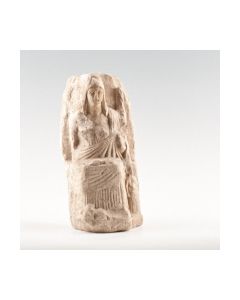 Stone statue of a seated Isis
Stone statue of a seated IsisVery fine condition, from an important London collection
Price: on request Slender Egyptian stone beaker
Slender Egyptian stone beakerThe small and tall stone vessel is made of alabaster. From the collection of Egyptologist Professor Wiedemann.
Price: on request Small axe head from the New Stone Age
Small axe head from the New Stone AgeCompact stone axe from the 3rd Millenium BC. Found on the Danish island of Moen.
Price: on request Flint knife from Northern Germany
Flint knife from Northern GermanyFlat two-edged stone blade from the Dagger Period of Northern Europe.
Price: on request Egyptian chalice
Egyptian chaliceThe thin-walled stone cup is reminiscent of a lotus bud. From the collection of Egyptologist Professor Wiedemann. 18th dynasty of Ancient Egypt.
Price: on request Roman glass paste
Roman glass pasteRing stone made of beautiful orange glass. From the Professor Brosch collection of ancient gems.
Price: on request Egyptian stone beaker
Egyptian stone beakerThe elegant stone vase was probably used as an ointment vessel. 5th to 6th dynasty of ancient Egypt, Old Kingdom.
Price: on request Egyptian Kohl vessel
Egyptian Kohl vesselThe small stone pot of nicely polished granite was used for Kohl, the eye cosmetic of the ancient Egyptians. From the time between Middle Kingdom and New Kingdom.
Price: on request Stone Age spearhead from North America
Stone Age spearhead from North AmericaFinely crafted flint projectile from the Stone Age of North America. From a swiss museum collection.
Price: on request Neolithic axe head
Neolithic axe headNicely crafted Stone Age tool made of jadeite. From southern France.
Price: on request Large paleolithic hand axe
Large paleolithic hand axePrehistoric stone tool made of wonderfully banded stone. It was the universal tool of the older Stone age and could be used as a borer or a cutter. From a Swiss museum collection. Found in Morocco, North Africa.
Price: on request Sassanian intaglio with griffin
Sassanian intaglio with griffinPerfectly preserved ring stone made of orange carnelian. It shows a winged hybrid creature with the body of a lion. With inscription in Pahlavi, the Middle Persian script of the Sassanids.
Price: on request Paleolithic hand axe
Paleolithic hand axeSmall prehistoric stone tool. It was the universal tool of the older Stone age and could be used as a borer or a cutter. From a 100 year old museum collection.
Price: on request Paleolithic hand axe
Paleolithic hand axeSmall prehistoric stone tool. It was the universal tool of the older Stone age and could be used as a borer or a cutter. From a 100 year old museum collection.
Price: on request Egyptian model vessels of a founding ceremony
Egyptian model vessels of a founding ceremonyA group of seven miniature bowls and three miniature vases made of clay. Once filled with offerings and used ritually during a foundation stone laying ceremony. Dating to the Old Kingdom, around 2500 BC.
Price: on request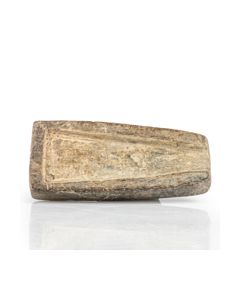 Bronze Age casting mould for a flat axe
Bronze Age casting mould for a flat axeOne half of a stone mould for bronze casting an axe head. The equipment is from a workshop of the 2nd Millennium BC, probably from the Carpathian Basin. From the famous Guttmann Collection. This mould was published in a work by Born and Hansen.
Price: on request Six neolithic stone tools
Six neolithic stone toolsNice group of artefacts from the Northern European Neolithic. One blade, two dagger fragments and three axe head fragments. All found in Northern Germany.
Price: on request Roman intaglio with aphrodite
Roman intaglio with aphroditeRing stone made of lovely orange glass paste. Roman Republican to Imperial.
Price: on request Syrian amulet in animal shape
Syrian amulet in animal shapeSmall amulet of nice red stone in the stylized shape of a pig. From the 3rd Millenium BC.
Price: on request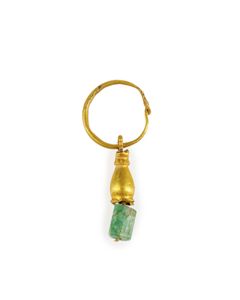 Roman gold earring with emerald
Roman gold earring with emeraldBeautiful jewellery from the 2nd century made of gold with a green stone bead.
Price: on request Stone Age chisel from Northern Germany
Stone Age chisel from Northern GermanyAsymmetrically shaped chisel with two polished sides. Made of light flint. Approx. 3400 to 2400 BC.
Price: on request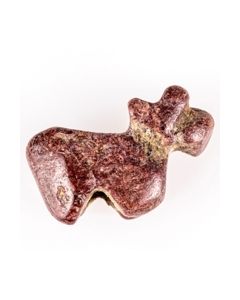 Sumerian miniature ram amulet
Sumerian miniature ram amuletNice small stone amulet in the stylized shape of a ram. From the 3rd Millenium BC.
Price: on request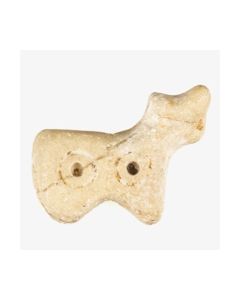 Sumerian ram amulet
Sumerian ram amuletNice small stone amulet in the stylized shape of a ram. From the 3rd Millenium BC.
Price: on request Sumerian miniature ram amulet
Sumerian miniature ram amuletNice small stone amulet in the stylized shape of a ram. From the 3rd Millenium BC.
Price: on request Lapis lazuli head of a pharao
Lapis lazuli head of a pharaoExtremely rare finely carved royal head made of blue stone with bronze beard. Late Period to Ptolemaic period of ancient Egypt.
€3,450 Stone Age bow scraper from Egypt
Stone Age bow scraper from EgyptThe Paleolithic tool is of beautiful shape and color. Thebes has been handed down as the place of origin. Including old museum display.
Price: on request Roman intaglio with Calydonian boar hunt
Roman intaglio with Calydonian boar huntNice ring insert made of composite glass. Its imprint shows the moment of the mythological boar hunt in which Meleager slays the beast.
Price: on request Roman intaglio with bird in hand
Roman intaglio with bird in handThe glass paste shows a hand enclosing a bird. It is a very rare depiction for an ancient ring insert.
Price: on request Near Eastern cylinder seal
Near Eastern cylinder sealThe seal of black stone bears a scene with four noblemen or gods. Late Syrian, around 1500 BC.
Price: on request Scarab with pattern of circles
Scarab with pattern of circlesThe beetle stone bears a popular motive of the Middle Empire. A nice example of its kind. This scarab is described in the catalogue of Irène Gautier-Vodoz.
Price: on request Roman intaglio inscribed DIOGENOY
Roman intaglio inscribed DIOGENOYThe gemstone made of red carnelian bears the inscription DIOGENOY. From the Roman period with original remains of the iron ring.
Price: on request Roman intaglio with mythical creature
Roman intaglio with mythical creatureRoman jewellery insert made of beautifully shimmering blue glass paste. It shows a creature with the front part of a horse.
Price: on request Roman intaglio with kneeling person
Roman intaglio with kneeling personNice light yellow glass paste from the Professor Brosch collection of ancient glyptics. Possibly showing a warrior.
Price: on request Roman intaglio with griffin
Roman intaglio with griffinThe ancient work shows a griffin composed of horse and eagle. The mighty wings are raised above the back, the forepart and paws are erect.
Price: on request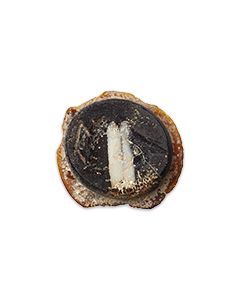 Roman intaglio with bird of prey
Roman intaglio with bird of preyThe ancient ring insert is made of beautiful opaque glass paste with white parts imitating an inclusion in stone.
Price: on request Roman intaglio with mythical creature
Roman intaglio with mythical creatureRoman jewellery insert made of transparent glass paste. It shows a creature with the front part of a horse.
Price: on request

